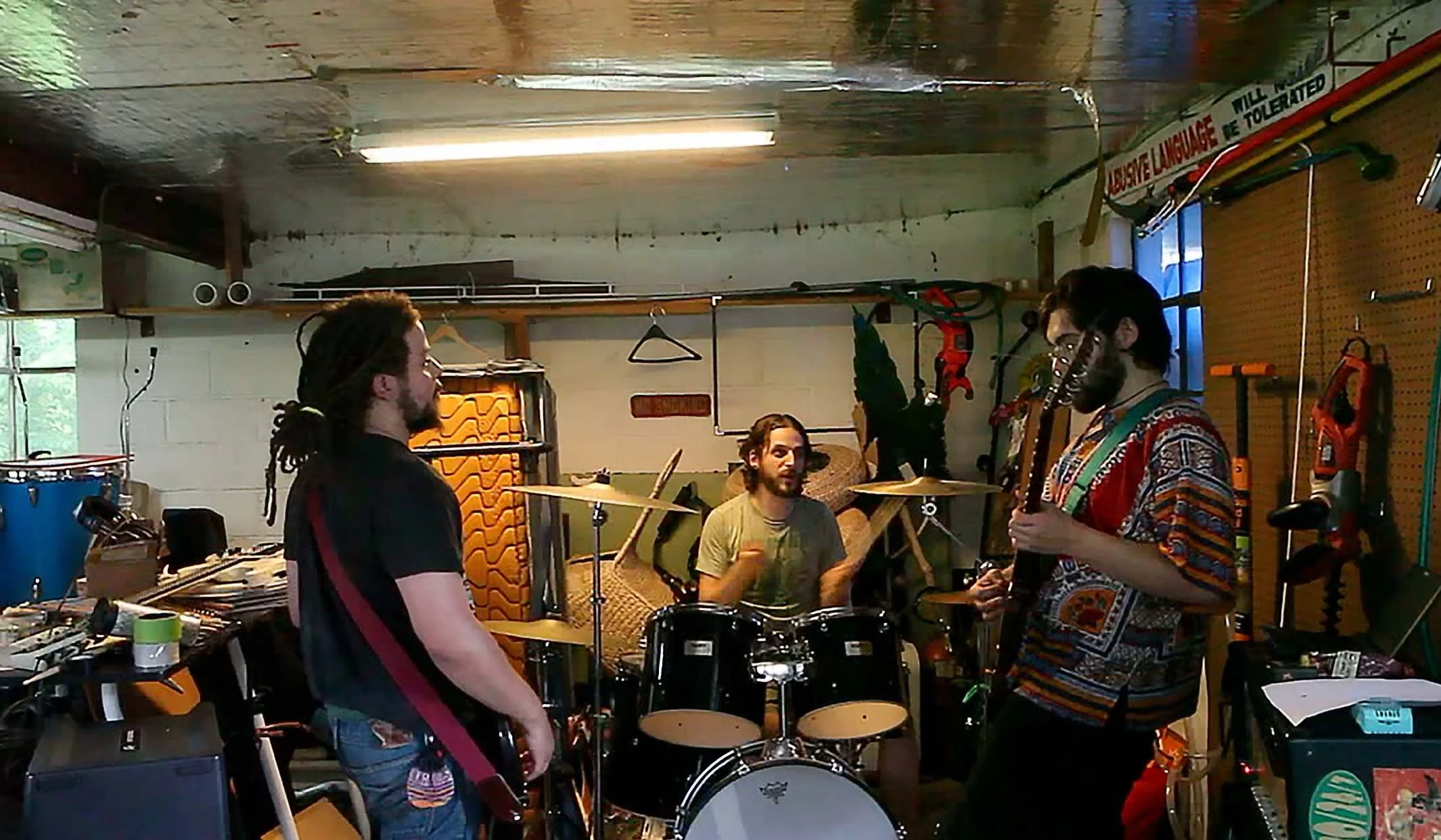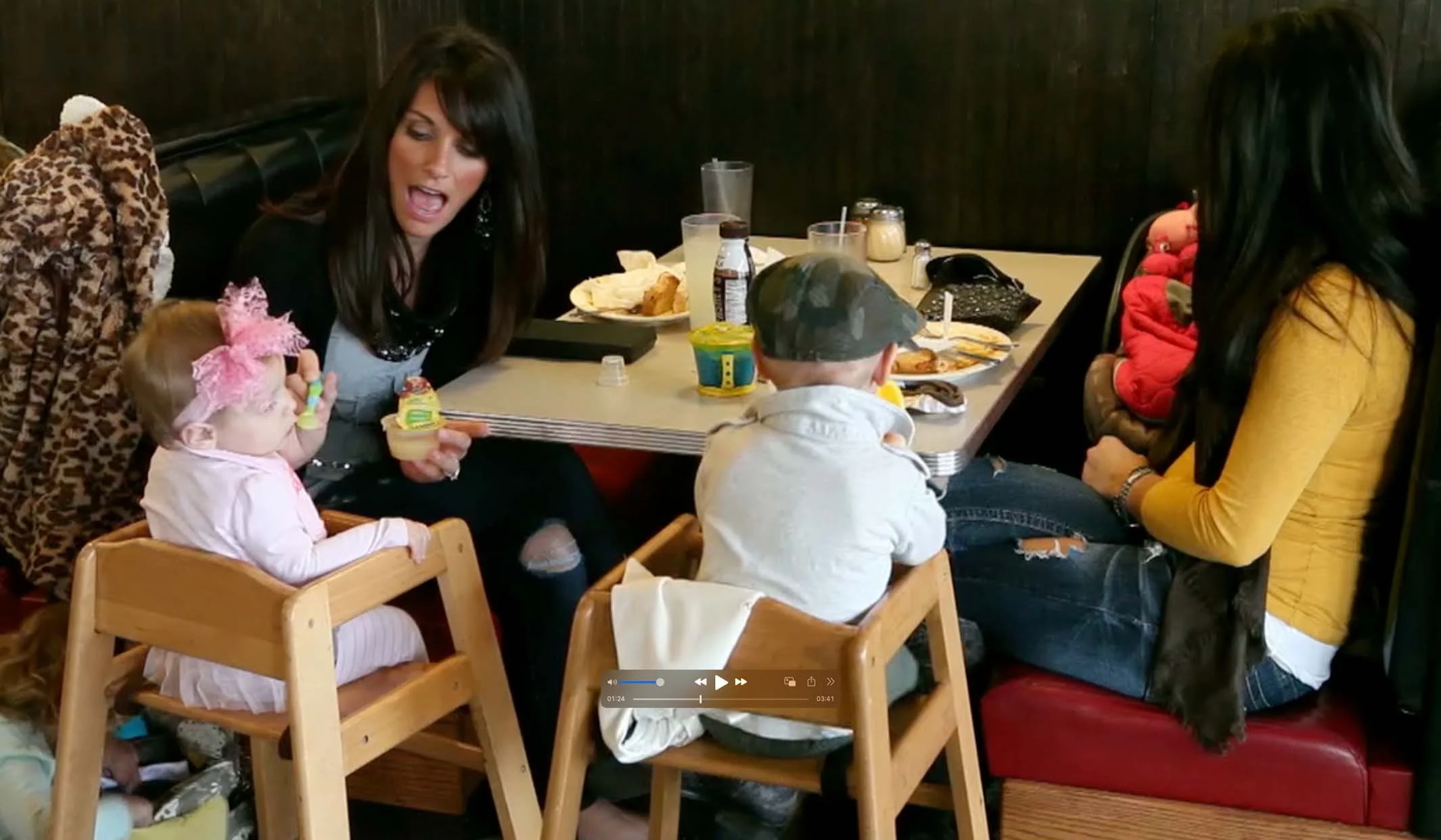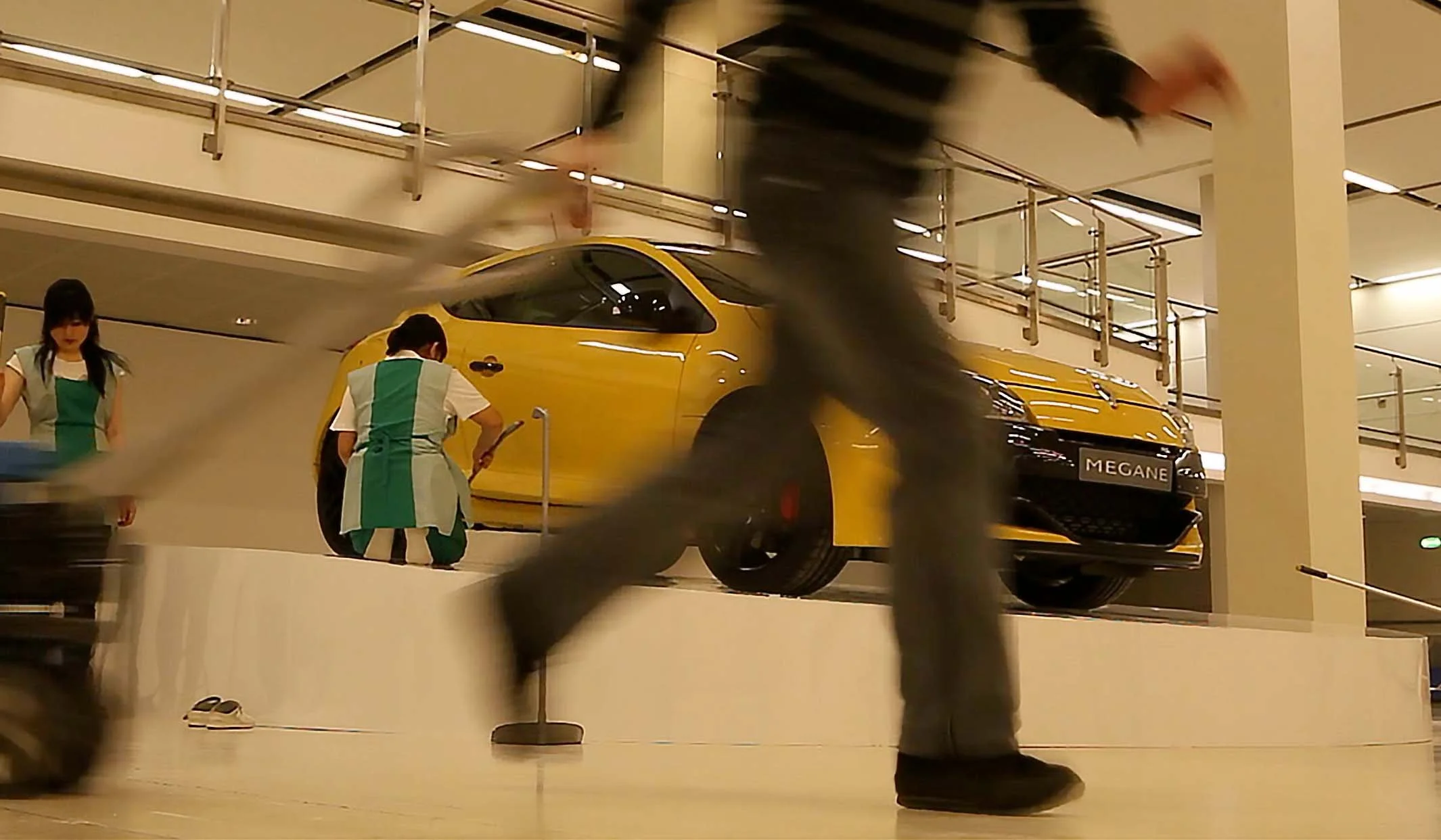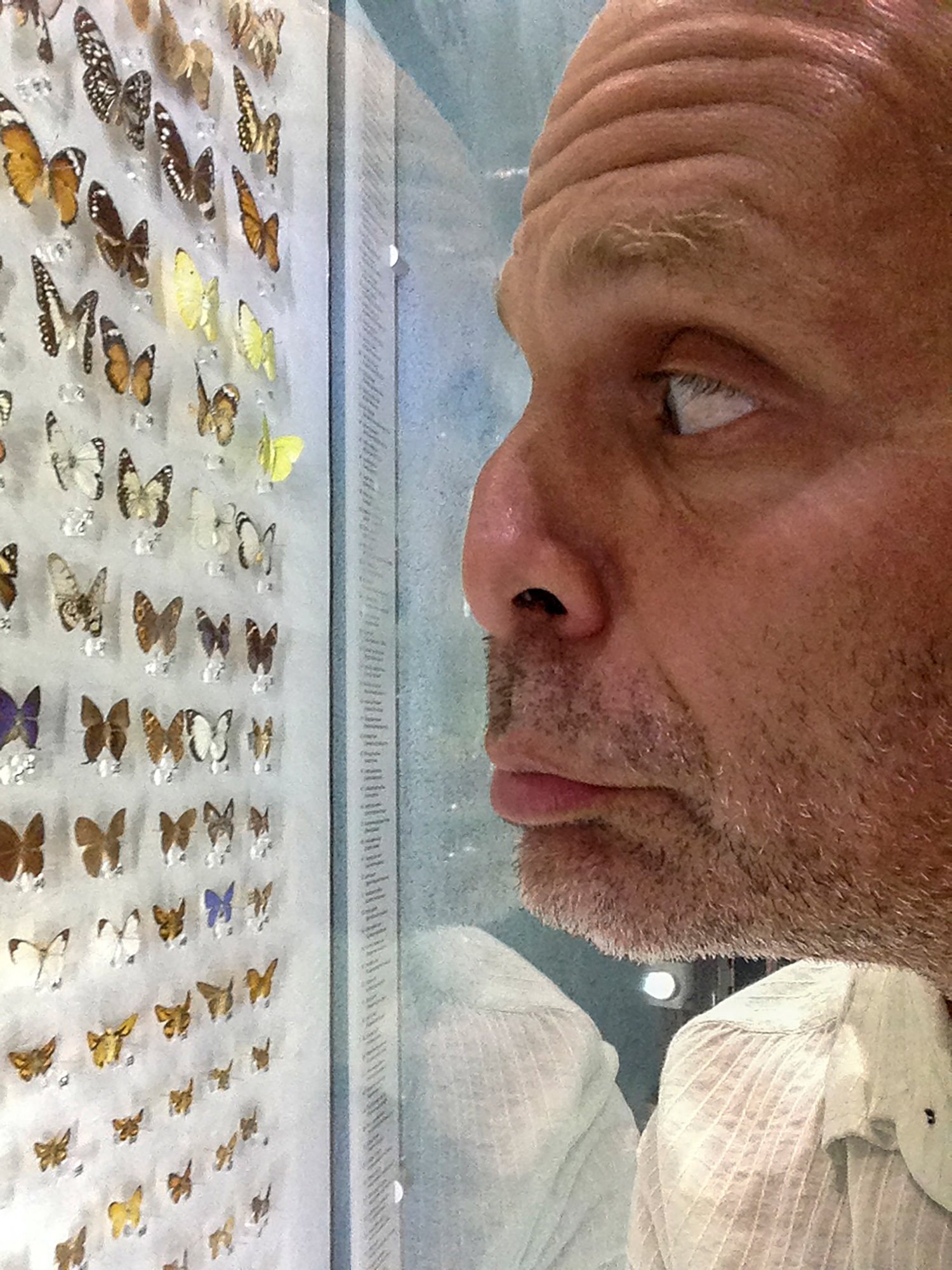When We Are Dancing (I Get Ideas)
When We Are Dancing (I Get Ideas) was a large exhibition at the Tang Teaching Museum, curated by Rachel Seligman.
The show, and accompanying catalog, gathered a set of collections I’ve made beyond the scope of my photographic practice, reaching into sculpture, video and installation, all centered around the idea that we accumulate images, objects and ideas when we search for something specific.
Counting In
Counting In is a video made by filming dozens of amateur bands in their practice spaces, and then cobbling together only the “1-2-3-4” counting in calls to form a new song.
Made while I was finding myself newly engaged with songwriting as an art form, I thought it might be a good idea to listen to bands working on music. I found them mostly by asking around in any city or town I was visiting, and would show up just saying I was making an art project about local bands. I admit I entered the project nervous about the amount of time I’d be spending with potentially terrible musicians, but I was immediately and continuously surprised by the amount of passion and commitment I discovered in the basements, garages, former industrial structures of America, which, it turns out, has got talent. I believe these little worlds, walled off with egg cartons and foam, are the true crucibles of the American Dream.
The video is part of a suite of projects about non-professional artists. I myself have had only the tiniest shred of interest in the “professional” art world, and treat it like a supply plane that lands weekly, or monthly on my island. I grew up in a household with professional musicians all around, but who were operating outside the black hole of fame and fortune. Counting In is a song that never happens, three minutes and thirty seconds of total potential, where no dream can be crushed, no aspiration can be unrealized.
The video is accompanied by posters I made for each band. These posters originally had text, but I proved to be a terrible graphic designer. I kept the background color I chosen for each still—taken from one pixel in the image—and left the text out, resulting in a candy colored array of images carrying these dusty but sacred spaces to a new and better place.
Curtain Calls
Curtain Calls is a new video in a suite of projects about non-professional artists.
Filmed at amateur theater productions all around the United States, this single-channel video presents only the curtain calls, editing past the stress of putting on a play, for the ecstasy of relief once it’s been completed. Curtain calls allow theatrical artists to release the tension of a sustained performance, and they provide a natural editing situation, as the lights go down, come up for the bows, then go down again. Each shot is filmed from the back of the house, center, so a series of pleasurable releases becomes one long sustained attempt to maintain applause, almost like a dream that won’t end, or a play whose cast keeps shifting before our eyes.
It’s OK to Hate Yourself
Ebay Lullabye
It's OK To Hate Yourself
Lay Down and Live
Speed of Light
Zombie Mommies
Gloria Alsenor
Just in Time
Profit Prophet
Vulture Sex
It’s OK to Hate Yourself is a large-scale multimedia project involving a professionally recorded vinyl LP of songs I’ve written, and a suite of music videos that accompany each song.
For years I’ve been asked how my photography and my poetry are related, and this project is an attempt to reconcile the two practices. The songs are lyrically challenging and the videos emerge from HD footage I continue to shoot on trips all around the world.
I grew up in a house full of musicians. And for years, I have had found music a more direct conduit to my inner life than any other medium. Writing songs and playing with a band, I’ve discovered a way to make work that is substantially personal. When I look back on twenty-five years of photographing and thirty of writing poetry, I realize that although the work is intent, sincere, and complex, neither my writing nor my photography talked much about me. It was in the third person. Music has brought me closer to the first person, and although this project is far from confessional, I believe it has a much more mature emotional vision.
As we move into a digital age, when everyone (especially professors of photography) is expected to move fluidly through all types of media, “It’s OK to Hate Yourself” is an attempt to produce a body of work that sings for its multimedia supper. Songs, written from personal experience, are married to images gathered from a visual world in constant flux, to produce something like an opera; a total work that pushes the viewer into unexpected experience, and is certainly pushing this artist into more ambitious territory.
The songs are harmonically complex and elaborately arranged pop melodies influenced by songwriters like Vic Chesnutt and Alex Chilton, but also by Ravel and Hoagy Carmichael. The lyrics are tragicomic, and attempt to comingle the wordplay and disgust of my poetry with deeper emotional resonance. Someone recently asked me what kind of music I was writing, and I answered “Schmotown,” then “Chuck John Ashbery.” After three decades of writing, I feel I’ve finally found my medium.
The songs, written by me, were arranged and produced by my brother, Benjamin Lazar Davis, and were recorded at Old Soul Studios in Catskill, NY.
Library of Ideas
The Library of Ideas is a collection of books with the word “Ideas” in each title.
Found in junk shops and thrift stores and on the side of the road, these are mostly unused ideas; ideas that didn’t persist or remain relevant. The furniture for its installation was designed by F/N Furniture.
Light Comedy Grave Rubbings
Light Comedy Grave Rubbings are crayon rubbings made in cemeteries all over the United States, of people with funny names.
I apologize to the ancestors of A. Purdy Outhouse and Eleanor Hammers Boner et al.
South Sea Selfies
Badminton Singaraja
Wedding Waterfall
Vampire
Sunrise Checker Window
Sunrise Permuteran
Sunrise
Sunny Bed
Studio
Spray Painted Kids
Sideman Lenscap
Shelter
Shells
Shellhead
Rooster
Rock on Face
River Swimmer
Red on Check
Permuteran Doubles
Other Sunrise
Morning Catch
Mirrors
Lotus
Light Sabre
King of Marigolds
Hmmmm
Floral Face
Fighting Cocks
Family
Every Reggae Band
Edges
Durian Matches
Drowning
Cock Fight Matches
Camera Camera
Butterflies
Buried
Beam
Barber Shop
Bamboo Cone Head
Bali Dream House Sunrise
Bali Army
All the Thongs
8 Ball
South Sea Selfies was made on a long, arduous, magnificent trip to Indonesia.
After a period of very very productive work in Los Angeles (resulting in my book I’m Looking Through You), my family took a vacation. It was hot and hard traveling with a four-year-old and I wasn’t sure I had anything to say about the very foreign culture I was a tourist in. I turned to the age-old subject of people who have nothing else to say: themselves. The pictures were installed on an iPod touch on a selfie stick extending from the gallery wall.
Tunisian Radios
Tunisian Radios–on a trip to Tunisia in 2008, I was moved by the presence of radios everywhere.
In my culture, music was migrating from a public concern to a private one, as people were listening to their own curated mixes on their iPods and phones. It was thrilling to be in a place where all kinds of sounds were being broadcast from sources in stores and souks and domestic windows. I made a collection of these radios and strung them together in a short video.
UN-EZ Listening
UN-EZ Listening is a large collection of Easy Listening albums.
Visitors can play record on three turntables which are designed to automatically repeat. So, three different records, designed to be played innocuously in the background, play at the same time, making us uneasy. Music made to be ignored becomes unignorable.
GOBSTOPPERS EVERYWHERE
A DIALOGUE WITH TIM DAVIS and RACHEL SELIGMAN
Tim Davis is going to make you laugh. But don’t be fooled: laughter is just the beginning.
His artwork explores the intersection of humor and longing where the abject aligns with the beautiful in unexpected ways. The projects that makeup When We Are Dancing (I Get Ideas) evoke hope and optimism in the face of terrible odds, desire and longing, pride and pleasure. Davis understands that playfulness can lead us gently toward the complicated truths of what it means to be human. His work is united by an ongoing inquiry into what makes us tick—what we make, and why we create, collect, and share. An artist, writer, and musician, he makes photographs, videos, songs, and sound and sculptural installations. Davis began as a poet, and his visual practice is laced with a love of language. The pleasure of wordplay is evident in his conceptual process and in his titles.
A Hunter and A Gatherer
AN Essay By LuC Sante
Tim Davis is not so much a street photographer as a road photographer.
He goes about his work the old-fashioned way, by hunting and gathering, and he finds wild and unexpected combinations of color, form, and meaning just sitting there on the roadside where anyone could have seen them, but nobody else did. He is an aesthete, an exacting technician, a connoisseur of all the incongruities in the semi-domesticated American landscape— and of course he is a collector. Every photographer is some kind of collector, but Tim doesn’t just collect with his camera. He collects images however he can get them, also sounds, jokes, performances, artifacts of every sort. And he is a very particular sort of collector: Like Aby Warburg or Otto Bettman, he is a typologist. He thinks in series, and he thinks big.
Portable Hole
AN Essay By Tim Davis
THESIS
I know where I became a collector. I could pretend I know when, but I’d be guessing, and looking very deep within, at a little boy in love with dinosaurs, in love with knowing about dinosaurs, in love with knowing. Knowing that there were gingko trees in dinosaur times, and that the tree down at the end of the block, in the strange side yard of a once-elegant rooming house, is a gingko tree. It was there I became a collector. The same splendid green fans scattered on the grass that were flattened under the Allosauruses as they reared up menacingly. We now think the T. Rex and his three-fingered cousin, the Allosaurus, were likely scavengers, who fell forward low to the ground instead of rearing up. Growing up means watching your myths get unlivable. But the little collector still lives in his myth. He’s maybe three, under the great corner gingko, reaching out for a Luna moth-shaped (and colored!) leaf and knowing, “I know about this.” I’d learned to read at two. I must’ve been cascaded with smiles and displayed to neighbors. Adored. The ginkgo leaf is the bottled feeling of still being in the myth; the myth of Mommy and Daddy and me, and of endless possibility. We live on this block and this block is my range, my world to explore. Memorizing every sidewalk square, the slate ones (smooth, multicolored, irregular, interesting) and the poured concrete (embossed with very recent fossils—a footprint, sometimes even a gingko leaf). There’s a kind of halfway house halfway down the block producing some Appalachian dissonance. And anyway, the whole town is a creepy Victorian spookhouse where our friends live in raccoon-filled gothic cottages with no running water. And I’m not scared to walk all the way to the gingko tree. Even though I’m only three. AndI am brave enough to turn into the strange yard and pick up a gingko leaf and put it in my pocket. I’m not scared of dinosaurs. I know about them.
Davis makes artwork that explores the intersection of humor and longing, where the ridiculous meets the sublime, and the abject aligns with the beautiful in unexpected ways. The exhibition catalogue includes a new interview with Tim Davis by Rachel Seligman, and essays by Luc Sante and Tim Davis. The catalogue is the latest in the Opener Series, and features beautiful color reproductions of all the works in the exhibition as well as full documentation of the show installed in the Tang Museum’s Malloy Wing.












































































